Today, we commemorate a somber yet monumental day in Scottish history—August 23, 1305. On this day, Sir William Wallace, one of Scotland's most revered national heroes, was executed by the English, marking the end of his fight in the First War of Scottish Independence. Wallace’s life and legacy, however, have endured far beyond his death, making him a symbol of resistance and the relentless pursuit of freedom.
Born around 1270, Sir William Wallace was a Scottish knight who emerged as one of the principal leaders in the struggle against English rule during the turbulent times of the late 13th century. His early life remains somewhat shrouded in mystery, with conflicting accounts of his upbringing and family background. What is known is that Wallace was a member of the lesser nobility and was drawn into the conflict with England as the political situation in Scotland deteriorated.
The political crisis in Scotland began with the death of King Alexander III in 1286, leaving a power vacuum and a contested succession. The resulting instability and the intervention of King Edward I of England, who sought to assert his authority over Scotland, led to widespread resentment and resistance among the Scots. Wallace, like many of his compatriots, was unwilling to accept English domination and took up arms in defense of his homeland.
Wallace first gained prominence in 1297 with a daring act of defiance—the killing of the English High Sheriff of Lanark, William de Heselrig. This bold move sparked a wider rebellion against the English occupation, and Wallace soon joined forces with Andrew Moray, another leader of the resistance. Together, they achieved a remarkable victory at the Battle of Stirling Bridge on September 11, 1297. Despite being vastly outnumbered, the Scottish forces routed the English army, inflicting a heavy defeat that reverberated throughout the kingdom.
Following the victory at Stirling Bridge, Wallace was appointed Guardian of Scotland, effectively becoming the leader of the Scottish resistance. However, his tenure as Guardian was short-lived. In 1298, the Scots suffered a crushing defeat at the Battle of Falkirk, where English longbowmen decimated Wallace's forces. Though he survived the battle, Wallace resigned as Guardian, and his influence began to wane as other leaders, including Robert the Bruce, emerged in the fight for Scotland's independence.
Despite the setback at Falkirk, Wallace continued to resist English rule, engaging in guerrilla warfare and seeking support from foreign powers, including the French court. However, his efforts to rally support for the Scottish cause were ultimately unsuccessful. In August 1305, Wallace was betrayed by a fellow Scot, John de Menteith, who handed him over to the English near Glasgow. Wallace was taken to London, where he was put on trial for treason and other charges.
The trial was a farce. Wallace's defense was that he could not be a traitor, as he had never sworn allegiance to King Edward I of England. Nonetheless, the verdict was a foregone conclusion. On August 23, 1305, Wallace was subjected to the brutal execution reserved for traitors—he was hanged, drawn, and quartered. His head was displayed on a pike atop London Bridge, while his limbs were sent to different parts of England and Scotland as a grim warning to others who might defy English rule.
Despite his death, Wallace's legacy endured. He became a symbol of Scottish resistance, immortalized in literature, poetry, and later in film. Blind Harry’s epic poem "The Wallace," written in the 15th century, romanticized his life and deeds, though it took considerable liberties with historical facts. In modern times, Wallace's story was brought to a global audience by the film "Braveheart," although it, too, was more legend than history.
William Wallace's fight for Scotland’s independence laid the groundwork for future struggles, and his name became synonymous with the fight for freedom. The monument at Stirling Bridge, erected in the 19th century, stands as a testament to his enduring legacy, reminding Scots and visitors alike of the price paid for liberty.

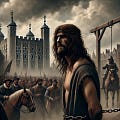





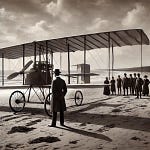
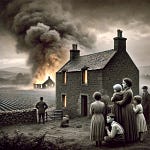

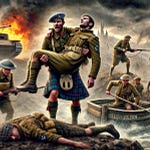

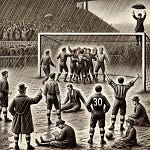
August 23, 1305